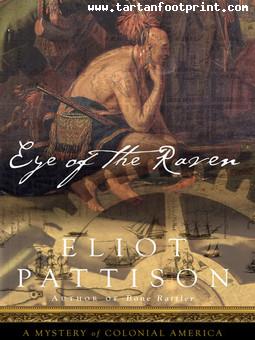You seem to be using an older version of Internet Explorer. This site requires Internet Explorer 8 or higher. Update your browser here today to fully enjoy all the marvels of this site.
February 13, 2014 by Council of Scottish Clans & Associa...
ANYONE INTERESTED IN THE NEXT BOOK SELECTION? We are! So here goes:
We are currently taking nominations for our second book selection. If you have a favorite work of historical fiction that offers ...ANYONE INTERESTED IN THE NEXT BOOK SELECTION? We are! So here goes:
We are currently taking nominations for our second book selection. If you have a favorite work of historical fiction that offers opportunity for insight and deeper exploration into Scottish American history let us know. We will be announcing the final selection before the end of February.
And here is an added twist: For our next and future historical fiction selections, we will also select an appropriately paired work of scholarly history that explores the same issues raised by our fictional authors. Sort of like the best wine paired with a great cheese! This will give us even more opportunities to put the fictional characters and story lines into real context.
Current Nominations for Historical Fiction Book Selection:
1. "The Fort" by Bernard Cornwall (2010): This book is chock full of military and non military Scots of various backgrounds, perspectives and behaviors. The events chronicled in The Fort occur several decades after the events of our first book Bone Rattler. While our first book was set during the French and Indian (7 Years) War, The Fort is set in the middle of America's next war - The Revolutionary War.
Here is what GoodReads.com had to say about The Fort:
Told by some, the American War for Independence was a string of victories interrupted only by one frigid winter in Valley Forge. Unfortunately, the real story was somewhat different. In his new tightly-threaded historical novel, Bernard Cornwell recaptures the chaos and distress of a misbegotten 1779 Patriot offensive on Maine's Penobscot River. With searing clarity, he etches living pictures of inexperienced colonial troops plagued by incompetent leadership and well-trained Redcoat soldiers and sailors. Stirring man-against-man battle scenes; betrayals, cowardice, and unexpected bravery. Carefully researched and well-executed historical military fiction.
Selection of this as our next book would allow the group to continue exploration of Scottish American history chronologically and this time really focus on the intriguing topic of Scots in the American Revolution: Which side(s) were they on and why?
_______________
2. "Eye Of The Raven" by Eliot Pattison (2010): The next in the "Bone Rattler" series of colonial American mysteries:
With the aid of the Indian Shaman Conawago, Duncan McCallum has begun to heal from the massacre of his Highland clan by the British. But his new life is shattered when he and Conawago discover a dying Virginian officer nailed to an Indian shrine tree. To their horror, the authorities arrest Conawago and schedule his hanging. As Duncan begins a desperate search for the truth, he finds himself in a maelstrom of deception and violence. The year is 1760, and while the British army wishes to dismiss the killing as another casualty of its war with France, Duncan discovers a pattern of ritualistic murders that have less to do with the war than with provincial treaty negotiations and struggles between tribal factions. Ultimately he realizes that to find justice, he must brave the sprawling colonial capital of Philadelphia. There the answers are to be found in a tangle of Quakers, Christian Indians, and a scientist obsessed with the electrical experiments of the celebrated Dr. Franklin. With the tragic resolution in sight, Duncan understands the real mysteries underlying his quest lie in the hearts of natives who, like his Highland Scots, have glimpsed the end of their world approaching.
Eliot's second book is even more a page turner than the first and the main characters are continued and even more fully developed always on the edge of the frontier and the American wilderness. The choice of Eye Of The Raven would allow the group a great chance to dig deeper into the fascinating and diverse discussion and exploration of the Scottish immigrants and the native tribes of British North America.
In this photo:


